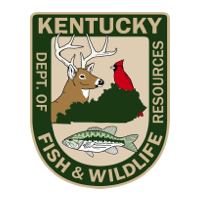‘Westward Expansion’ topic of NSDAR program
Published 2:29 pm Tuesday, March 27, 2018

Photo submitted
Pictured are Regent Nancy Britton, guest speaker Harold Jerrell and Program Chairman Joy Burchett.
The Major George Gibson Chapter NSDAR met Feb. 24 at the home of Chaplain Manerva Watson. Members present were Regent Nancy Britton, Charlotte Brooks, Joy Burchett, Andrea Cheak, Rebecca (Becky) Jones, Agnes Marcum, Judy Richardson, Rebecca (Becky) Royal, Augusta Sinon, Mary Sprinkle, and Manerva Watson. Also present was guest speaker Harold Jerrell and wife Nancy.
Regent Britton called the meeting to order and welcomed everyone. She thanked Program Chairman Burchett for arranging for Jerrell to speak and thanked him for graciously accepting. Members participated in the opening DAR Ritual, the Pledge to the Flag, The American’s Creed, the Preamble to the Constitution, and the National Anthem. The Flag Quote was taken from the fourth verse of the National Anthem. Chaplain Watson gave the devotion and asked a blessing for the food provided by Regent Britton.
Program Chairman Burchett introduced Harold Jerrell, stating he was going to do a program on “Westward Expansion” as it relates to our area, and that we are delighted to have him and his wife. Jerrell is a well-known local photographer and author.
Jerrell’s “Westward Expansion” program was very interesting and informative and included the showing of many beautiful slides. He began by stating there were two paths in the late 1700s that Daniel Boone could have taken from Duffield (Virginia) to the Cumberland Gap. One is the traditional Wilderness Road and the other is the less familiar Hunter’s Trace Trail. He outlined the likely direction the settlers would have taken if using the Hunter’s Trace Trail, some of which is marked today as the Wilderness Road.
Daniel Boone became famous because he is the one who blazed the trail to Cumberland Gap after being hired by Col. Richard Henderson. Boone had been in the Gap before, perhaps as early as 1765. There were others even earlier who would have passed through the area. Dr. Thomas Walker received a lot of credit also as did Powell and Wallen. Boone was told by the Cherokee that he would find the settlement “dark and bloody,” earning Kentucky the name “The dark and bloody ground.” In 1773, Boone suffered a tragedy in Lee County when his son was killed by Indians.
In those days, the road to Kentucky would have been called Boone’s Path, Kentucky Path, Kentucky Trace, Kentucky Road and other names. Martin’s Station was an important point. At one time, there were 12 stations in Lee County which were close enough together that horseback riders could get help from another station if needed. When settlers passed the White Rocks in Lee County, they knew they were within one day of Cumberland Gap.
The settlers traveled in winter for two reasons: less chance of Indian attack and the opportunity to arrive at their destination in late winter or early spring in time to build a shelter and start their crops. Winter would have been a difficult time to travel. There are reports that the settlers were barefoot, or their feet wrapped in rags, leaving a bloody trail. The winter of 1780 has been described as so particularly severe that prices of necessities became exorbitant, such as $100-$150 for a bushel of corn and $500 for a bushel of salt.
The weather was not the only hardship facing these early settlers as there was the ever-present threat of Indian attacks as well as diseases. Many had to be buried along the way with no marker. We generally hear about the men, but women also had an important role. In addition to other duties, they had to be on the lookout and able to shoot in the event of an attack by Indians or bandits.
Jerrell recommended some resource books, including “The Wilderness Road” by Dr. Robert L. Kincaid, a former professor at Lincoln Memorial University, and his own book “Cumberland Gap: Pathway to a Land of Mist and Mystery,” which is available at the Wilderness Road State Park. The program ended with a lively question and answer session during which members learned even more historical information.
The February 2018 President General’s Message, presented by Andrea Cheak, included a report on the Patriot Records Project in which member volunteers are indexing the names of men, women, and businesses whose service helped the Revolutionary War. For the Defense Minute, Joy Burchett read about a new exhibit of battlefield images at the Smithsonian.
The “Alliance Flag” was the topic of Agnes Marcum’s Flag Minute. This flag was on a ship commanded by John Paul Jones during the Revolutionary War. The DAR School Minute focused on Berry College, the third DAR school visited during the 2017 tour. Marcum continued reading about the Choctaw code talkers in her Indian Minute.
Regent Britton showed two World War II pillow tops for the American Heritage Minute. Her Conservation Minute included several March designations, including World Wildlife Day, International Earth Day, National Agriculture Day, World Water Day, and National Walk in the Park Day. The Veterans Minute focused on Vietnam Veterans Day on March 29th.
For the Women’s Issues Minute, Britton reminded members of steps in flu prevention: Wash hands and clean surfaces often and avoid close contact with sick people. March includes Women’s History Month, National Craft Month, National Nutrition Month, and Red Cross Month and other designated days including Read Across America and World Day of Prayer.






